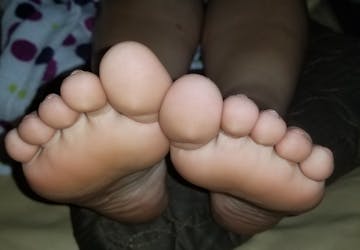Why Plantar Fasciitis Treatment Is Important To You
For some athletes, simply altering running shoes can substantially alleviate plantar fascia discomfort. A physical therapist can utilize a number of various taping methods to support the plantar fascia, giving it a chance to recover. Some shoes can be fitted with inserts. One example is an orthotic, which covers the length of the shoe.
Another alternative is a heel cup. This insert is designed to support and cushion the heel. Plantar fasciitis is related to less flexibility in the ankle, Achilles tendon, and calf muscles. Mild stretching to enhance versatility can make the biomechanics of standing, strolling, and jogging less stressful for the plantar fascia.
Using mild pressure, roll the tennis ball backward and forward under the foot. Stand 18 inches far from a wall with feet about 6 inches apart and put hands versus the wall, at shoulder height. Without moving feet, lean into the wall, bending the foot and extending the Achilles tendon and calf muscles Sit on the floor with legs straight in front.
Plantar Fasciitis Treatment Data We Can All Learn From
Stretches like these last 2, in which the top of the foot and toes move towards the shin, are called dorsiflexion stretches. Using a cold-pack or bag of ice to bottom of the foot might provide pain remedy for plantar fasciitis. Relief can also be found by rolling the bottom of the foot on a frozen plastic water bottle.
Procedure Principles. For runners, increasing the number of steps per mileusing a shorter stride however increasing cadence to preserve speedmay lower the tension on the plantar fascia even though there will be more steps per minute.1.Extra weight puts an increased stress on the plantar fascia tissue. Shedding excess pounds will lighten the load on the body's musculoskeletal system, including the plantar fascia.
This avoids the plantar fascia from resting in a contracted position. (Naturally, many individuals find these splints challenging to oversleep.). While it is not considered standard treatment, deep myofascial massage may promote blood circulation and recovery. While not all experts concur, some believe making use of manual manipulation/mobilization (by a chiropractic doctor or other certified health professional) together with exercise is a reliable way to deal with plantar fasciitis.2, People with consistent, moderate to extreme cases of plantar fasciitis, might use these non-medical treatments in combination with medications, injections, or surgical treatments.
Plantar Fasciitis Treatment Strategies: Why is Plantar Fasciitis Treatment Important?

Medications are not a treatment for plantar fasciitis and ought to be used in conjunction with other treatments. Non-steroidal anti-inflammatory drugs are utilized to reduce swelling and swelling, and are recommended for clients experiencing moderate to extreme discomfort (Click Here). NSAIDs include aspirin (e.g. Bayer), ibuprofen (e.g. Advil), naproxen (e.g. Aleve), and cox-2 inhibitors.
dexamethasone) through healthy skin to the sore location.1 Iontophoresis may be suggested to patients with plantar fasciitis who can't tolerate injections or desire to prevent injections. If non-medical treatments and medications do not offer relief from plantar fasciitis, patients may think about injections. 1. Wellenkotter J, Kernozek TW, Meardon S, Suchomel T.

Int J Sports Med. 2014; 35( 9 ):779 -84.2. Bronfort G, Haas M, Evans R, Leininger B, Triano J. Efficiency of manual treatments: the UK proof report. Chiropr Osteopat. 2010; 18:3.3. Clar C, Tsertsvadze A, Court R, Hundt GL, Clarke A, Sutcliffe P. Scientific efficiency of manual therapy for the management of musculoskeletal and non-musculoskeletal conditions: methodical evaluation and update of UK evidence report.
Surprisingly Reliable Plantar Fasciitis Treatment
The plantar fascia is a long, thin ligament present along the bottom of the foot that produces the arch of the foot. It extends from the heel bone, and then divides and fans out to connect itself to the toes. Plantar fasciitis is a condition where the plantar fascia becomes inflamed from overstretching or overuse, causing discomfort in the heel and bottom of the foot.
Plantar fasciitis happens when you strain or aggravate the plantar fascia ligament. Repeated stress can result in small tears in the ligament, resulting in discomfort and swelling, which can make strolling difficult. Stress can happen due to: High or low foot arch Obesity or sudden weight gain Tight Achilles tendon which connects the calf muscles to the heel Beginning a brand-new activity or increasing the intensity of an activity Wearing inappropriate shoes with soles that are too soft, do not fit well or provide bad arch assistance The major complaint of plantar fasciitis is pain and tightness in the heel and foot.
Your doctor might watch how you stand and stroll, and assess related conditions such as high arches. X-rays of the foot can be taken if your medical professional believes a tension fracture, a hairline fracture in the bone, or other associated conditions such as a heel spur, which is additional calcium deposit on the heel bone.
Why Plantar Fasciitis Treatment Matters - Social Media
Conservative treatment steps include: Rest: Rest is the initial step that is thought about for decreasing discomfort and preventing additional damage to the ligament. Ice: Rolling your foot over ice can be very effective in reducing swelling, and is advised for 20 minutes, 3-4 times a day Medications: NSAIDs (non-steroidal anti-inflammatory drugs) may be recommended for relief of pain and swelling Workout: calf stretches and plantar fascia stretches work in easing pain A steroid injection might be administered into the plantar fascia for lowering discomfort and inflammation Helpful shoes and orthotics might also be advised to lower the pain while walking or standing Night splints can be recommended by your physician to help stretch the plantar fascia while sleeping Physical therapy might be advised for instruction on stretching workouts, massage and ice treatments PT may use extracorporeal shockwave treatment (ESWT), which uses high-energy shockwave impulses to stimulate healing of the harmed plantar fascia tissues Surgical treatment is thought about just if conservative treatment does not supply effective relief after 12 months.
Gastrocnemius economic downturn: Tight calf muscles or gastrocnemius muscles can strain the plantar fascia. To launch this tension, your surgeon will surgically lengthen the calf muscle, and increase the movement of the ankle (See This Here). The surgery can be performed by open incision or endoscopically through a little incision by utilizing an endoscope, which is a long instrument with a small video camera attached.
Your cosmetic surgeon will partly cut the plantar fascia ligament to alleviate the tension. The surgical treatment can be performed endoscopically but open incision is much easier to carry out and is associated with lower danger of nerve damage. Issues are uncommon following surgical treatment to deal with plantar fasciitis, however just like any surgical procedure, they can happen.
And How To Avoid Problems with Plantar Fasciitis Treatment
If you are experiencing symptoms of plantar fasciitis, detailed treatment from our foot specialists is readily available at ORA Orthopedics. As the biggest and most advanced orthopedic practice in the Quad Cities, ORA Orthopedics uses the greatest choices in care to kids and adults with a wide array of musculoskeletal conditions, consisting of plantar fasciitis and other uncomfortable or unpleasant foot issues (Check Here).
This condition is normally marked by greater foot pain and stiffness after not during workout or extended periods of lack of exercise. Plantar fasciitis might also cause bone stimulates, or little boney developments, to develop on the heel bone. The skilled medical professionals and staff at ORA Orthopedics' Foot and Ankle Center of Quality are trained in the most recent treatment strategies and offer patient-focused care that is second to none in the Quad Cities.
Tidak ada komentar:
Posting Komentar